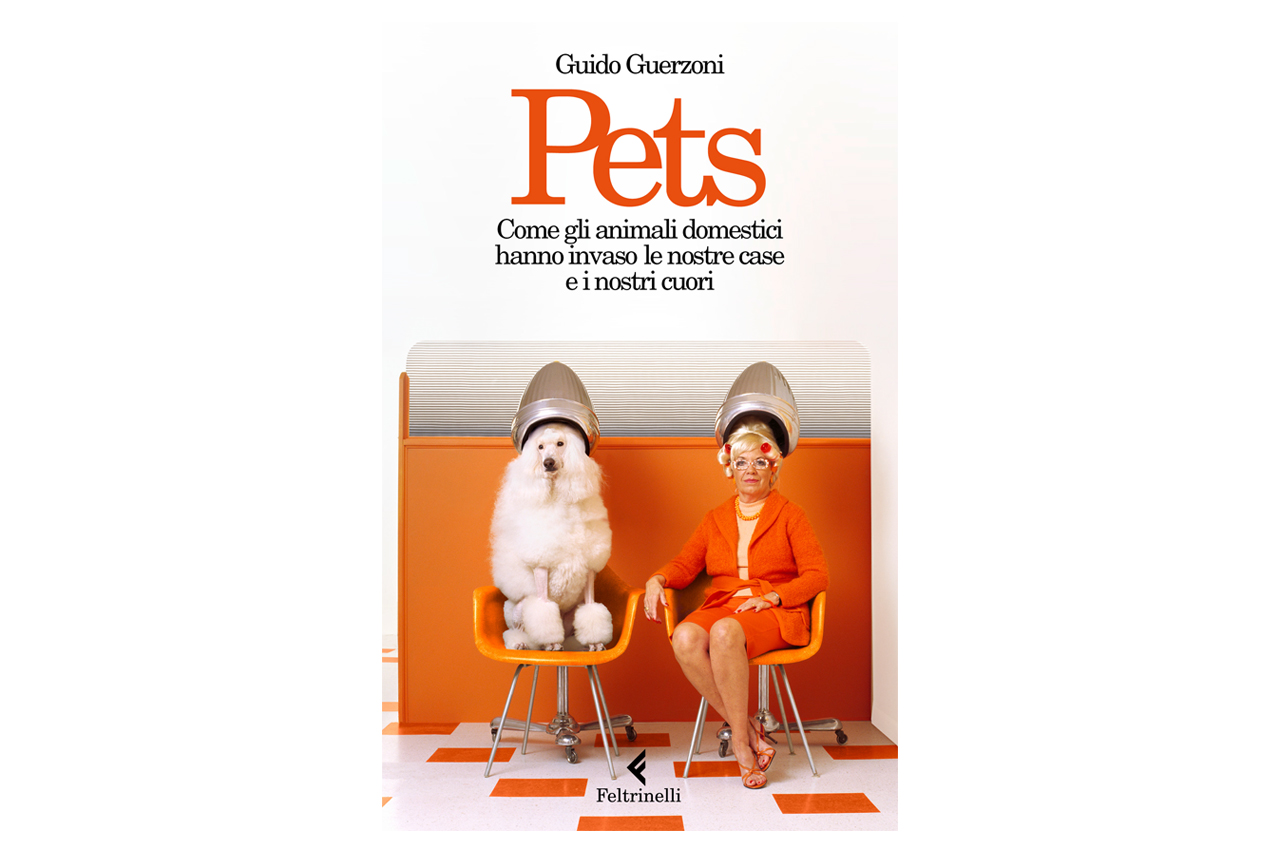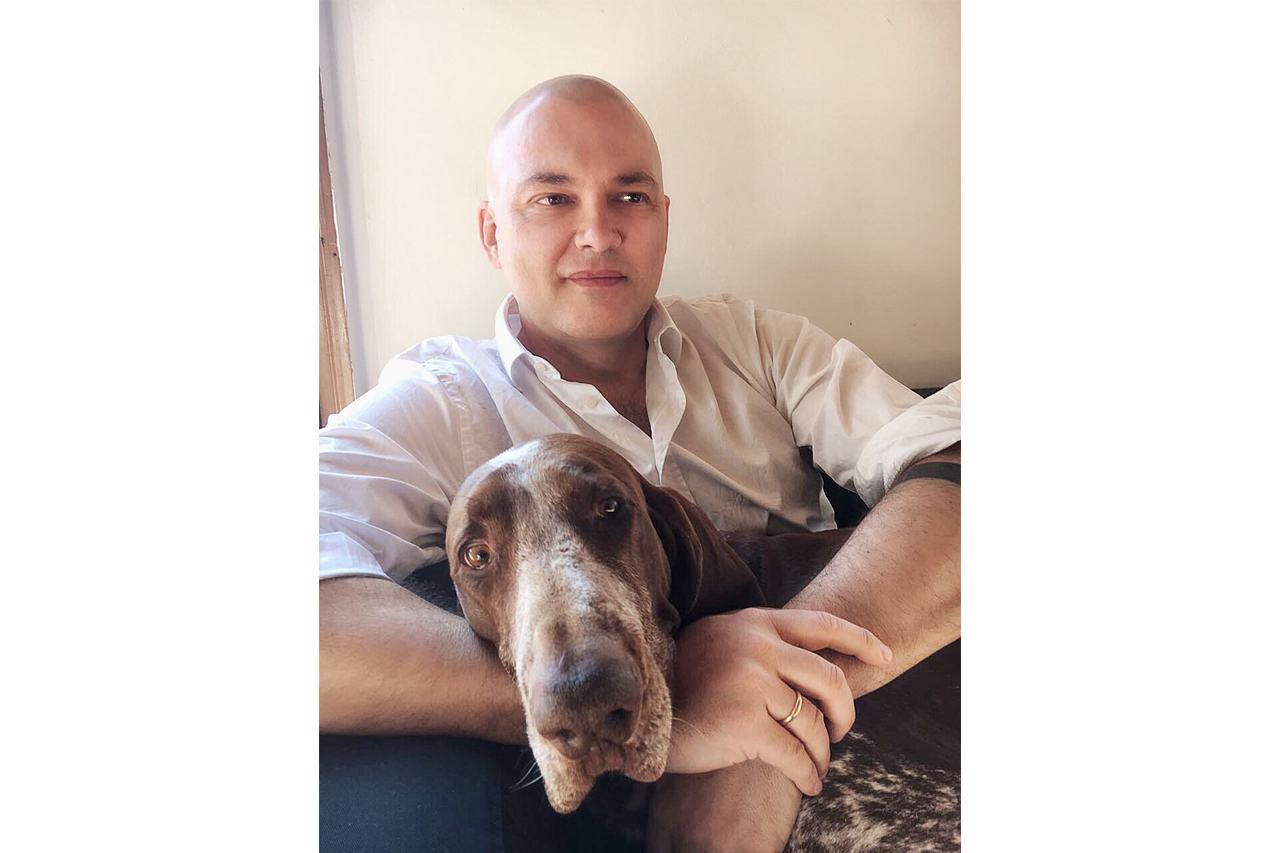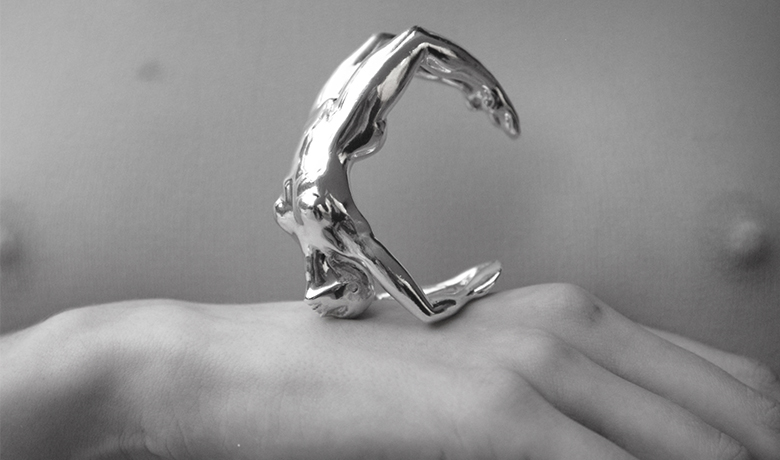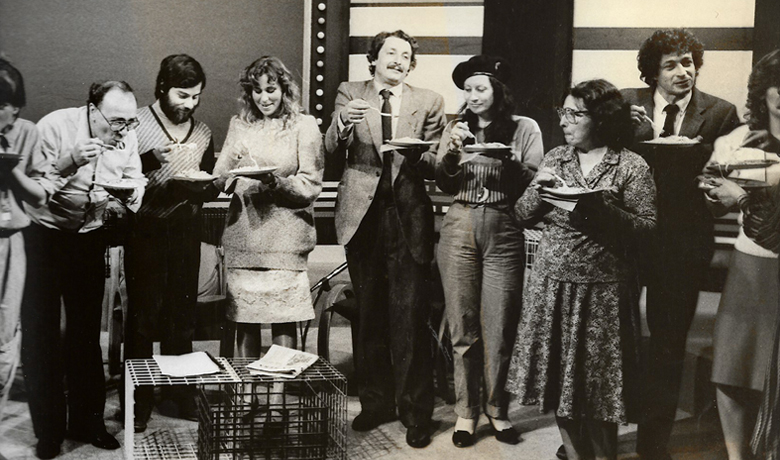#ThePuppyIssue
Let's talk
PETS
// How domestic animals have conquered our flats. And our hearts.
AN INTERVIEW BY FRANCESCA ACQUATI
Thirty five millions of Italians, and more than 3 billions and a half people in the world, own a domestic animal, object of unconditional affection and care.
But, nowadays, the concepts of “property” and of “possession” in the relation between human being and pet, tend to completely loose their canonic meaning. “Pets. How domestic animals have invaded our flats and our hearts” is the latest book by Guido Guerzoni.
Guerzoni, who teaches Cultural Heritage Management at Bocconi University and who directs the project of M9 Museum in Mestre, investigates with a clear look and irony the changes of the relationship between domestic animals and their masters.
Through its chapters, we are pushed to meditate on how the process of humanization of the pet has landed to a new point in history: we treat them as family members, we have feelings for them, that we often don’t even perceive for other human beings, we let them in into the most intimate spaces of our lives and we worry about giving them a future even after our own death.
This contemporary scenario is due to the fact that we have extended our concept of humanity or simply because we feel the more and more lonely?
We are certainly dealing with a theme linked to solitude or hysteria of interpersonal relationships: we get bored before, we fear changes, we are the more and more reluctant to take risks, we love to have situations’ control and, in this case, pets fill our vacuums giving us unconditional love, being always with us and never growing up. The more we spend time with them the more we transfer on them emotions and behavioral patterns which can be associated to the ones which we usually invest on other human beings.
This happens also because pets have a longer life expectation, in comparison to the past, therefore they are sharing with us a much longer time span.
Francesca. As you explain in your book, we even started to worry about leaving an heritage to our animals, through the trust funds which will ensure pets a decent future after our death. Let’s go through the topic.
Guido Guerzoni. The nature of trust funds shouldn’t be misinterpreted, it is a subject linked to legislation.
Some time ago, when owners were dying, cats and dogs were euthanized, why? It is a pharaoh regulation against which every second generation’s of animal rights groups have fought.
Today we arrived to the introduction of a trust fund post mortem: the 25% of North American owners set them as testaments’ beneficiaries or constitute specific trust funds in order to protect their future and even in Italy 20% of the interviewees would like to allocate an amount of money for the post mortem maintenance.
The goal is to take care of our pets when we won’t be there any more, and it is becoming a very common praxis to open trust funds lasting in average 10-12 years, in other words the necessary span of time to guarantee that the trust management is respected. So this funny figure of the inspector came out, his aim is to control that funds are used according to the testamentary dispositions, arriving to some paradoxical case, controlling that the dog is served a rare sirloin beef. But those eccentricities are useful for the cause.
The more and more, indeed, we are suggested to adopt a pet in the old age to have company and it is scientifically tested from any medical and psychological center that this relationship improves the life quality of the elder. If at 75 years old you take a new dog and you worry about what it is going to happen to him when your life will be over: it is a civilization fact.
F. In “From masters to fathers”, you underline the process of change during the last 15 years of the relationship between human being and pets: we don’t recognize ourselves any more in the role of masters, maybe also due to the fact that also the fathers’ role in our society seems to be changed.
GG. We don’t recognize ourselves in the masters’ role, nowadays nobody wants to be a gendarme, at the moment a refuse of the concept of authority is taking place: we renounce to exercise it towards both our kids and our domestic animals. The general behavior is very much looking after. In the phase during which our kids test the authority by provoking it, we tend to smooth the obstacles, to limit the hardest aspects, even if the parental role foresees to go in contraposition with kids, because, understanding that the no are real, and that prohibition exists, will allow them to grow up. In this general climate of “unkempt” also the relationship with pets experiences the same destiny and we are not even capable of employing authority with them.
The word itself pet means “spoiled child”, it is a spoiling on itself, even if it includes both the sense of “spoiled child” and of “puppy”.
F. Hyper spoiled puppies who spend with us a relevant portion of our lives, teaching us new linguistic manners and stimulating the non verbal communication…
GG. Attention: the linguistic field on which the game is played doesn’t only concern the non-verbal component, but many pet owners talk with their pets and they sustain, properly, to understand them and being understood. When you spend so much time with an animal you end up understanding exactly what he is asking and you have the sensation of “talking” with him. “I’m hungry”, “I want to go out”, when my dog is thirsty, for instance, I perfectly understand him. Then there are all of these new researchers who believe to be able to translate the dialogue men-pets in real conversations. Paradoxically with this studies we will end up to the scientific affirmation of the word and pets will be fully equalized to humans, reaching the improbable scenario in which we will be able to marry our domestic pet. Which, honestly, many pet owners would love.
F. One of the most interesting aspects of your book is the enormous quantity of collected data simply revealing that: 71% of pet owners let animals sleep in their own bed, 64% buys them presents on holiday, 50% regularly speaks with them, 45% always remembers to buy a present for their birthday, 31% regularly cook them delicious meals, 27% has commissioned professional photo shootings for them and 12% regularly bring them at their workplace. Reading this data it seems like the relationship between master and pet is characterized by the type of attentions that are usually devoted to friends, family or lovers.
GG. There is a new American series by ABC, Downward Dog, which tells the story of this dog who is persuaded to be the boyfriend of his mistress. In the under 35 generation, when young people take domestic animals, it often happens that in the 15 years of life spent with your cat, is easier to change girlfriend than domestic animal. They become a real affective surrogate: “I split from the husband but who cares, anyway I have the cat and it’s enough”. Without projecting zoophilia where there is not event the shadow of it, it is thus really frequent the implementation of totally absorbing, invasive and intimates relationships.
F. Indeed it is not by chance that 60-70% of pet lovers always sleep with their pets, almost giving up to a own intimacy or tracing lines of border. This fact, even more interesting if compared to what was happening until some years ago, as you tell in the book: “None of my domestic animals, until when I left the my parents’s home, has ever obtained the permission to live inside, not even cats and dogs. But thirty years ago we were cavemen, today we don’t even force them out from the double beds.
GG. Nowadays, 1 pet lover out of 3 let his domestic animal sleep with him and the funniest thing is that he probably complains with friends about the fact of having sleeping issues, and will always have a bad sleep since animals have a polyphase sleep, they wake up continuously, they move, they step on your face. But we accept even this, in the sake of love for our animals.
Image courtesy of Guido Guerzoni
Translation by Ingrid Melano
Trentacinque milioni di italiani e più di 3 miliardi e mezzo di persone nel mondo, possiedono un animale domestico, oggetto incondizionato di affetto e cure.
Ma, al giorno d’oggi, i concetti di “proprietà” e di “possesso” nella relazione tra essere umano e pet tendono a perdere del tutto il loro significato canonico.
“Pets. Come gli animali domestici hanno invaso le nostre case e i nostri cuori” è l’ultimo libro di Guido Guerzoni.
Guerzoni, che insegna alla Bocconi progettazione museale e dirige il progetto del museo M9 di Mestre, indaga con lucidità e ironia il cambiamento del rapporto tra animali domestici e i loro padroni.
Nei suoi capitoli, ci fa riflettere su come il processo di umanizzazione dell’animale domestico sia arrivato ad un punto mai toccato prima nella storia: li trattiamo come membri della famiglia, proviamo emozioni per loro che spesso non percepiamo neanche per altri esseri umani, li lasciamo entrare nelle zone più intime della nostra vita e ci preoccupiamo di garantire loro un futuro anche dopo la nostra morte.
Questo scenario contemporaneo è dovuto al fatto che abbiamo esteso il nostro concetto di umanità o semplicemente perchè ci sentiamo sempre più soli?
Sicuramente stiamo trattando una tematica legata alla solitudine o alla isterizzazione dei rapporti interpersonali: ci annoiamo prima, temiamo il cambiamento, siamo sempre più restii a rischiare, amiamo avere il controllo delle situazioni e, in questo caso, gli animali domestici riempiono i nostri vuoti dandoci amore incondizionato, stando sempre con noi e non crescendo mai.
Più passiamo il tempo con loro e più trasferiamo su di essi emozioni e modelli comportamentali associabili a quelli che solitamente mettiamo in atto con atri esseri umani.
Questo succede anche perché i pets hanno una prospettiva di vita più lunga rispetto al passato condividendo quindi con noi un periodo di tempo molto più lungo.
Francesca. Come spieghi nel tuo libro, abbiamo iniziato addirittura a preoccuparci di lasciare ai nostri animali una eredità, attraverso fondi fiduciari che assicureranno ai pets un futuro dignitoso dopo la nostra morte. Approfondiamo l’argomento.
Guido Guerzoni. La natura dei fonti fiduciari non va fraintesa, è una questione legata alla normativa. Tempo fa, quando morivano i padroni, cani e gatti venivano soppressi, perché? È una disposizione da faraone contro la quale hanno lottato tutti i movimenti animalisti di seconda generazione.
Si è arrivati oggi all’introduzione di un fondo fiduciario post mortem: il 25% dei proprietari nordamericani li designa beneficiari testamentari o costituisce appositi trust e fondi fiduciari per tutelare il loro futuro e anche in Italia il 20% degli intevistati vorrebbe stanziare una somma in denaro per il mantenimento port mortem.
Lo scopo è prendersi cura dei nostri pets quando non ci saremo più, ed è prassi sempre più frequente aprire fondi fiduciari della durata media di 10-12 anni, ovvero il periodo necessario a garantire che la gestione del trust venga rispettata. È nata questa buffa figura dell’ispettore il cui scopo è controllare che i fondi siano utilizzati secondo le disposizioni testamentarie, arrivando in alcuni casi paradossali a controllare che al cane sia servito il controfiletto di manzo al sangue. Ma anche queste eccentricità servono alla causa. Sempre più spesso, infatti, ci viene suggerito di prendere un animale in vecchiaia per avere compagnia ed è scientificamente provato da qualsiasi studio medico e psicologico che questo rapporto migliori la qualità della vita dell’anziano. Se a 75 anni prendi un nuovo cane ti preoccupi di quello che gli succederà quando la tua vita sarà finita: è un fatto di civiltà.
F. “Da padroni a padri”, è il processo di cambiamento che sottolinei, in atto negli ultimi 15 anni nel rapporto tra esseri umani e pets: non ci riconosciamo più nel ruolo di padroni, forse dovuto anche al fatto che sembrerebbe essere cambiato anche il ruolo dei padri nella nostra società.
GG. Non ci riconosciamo nel ruolo di padroni, oggi nessuno aspira a fare il gendarme, è in atto una ricusazione del concetto di autorità: rinunciamo ad esercitarla nei confronti sia dei nostri figli sia dei nostri animali domestici.
L’atteggiamento generale è molto accudente. Nella fase in cui i nostri figli testano l’autorità provocandola, tendiamo a spianare gli ostacoli, a limare gli aspetti più duri, anche se il ruolo genitoriale prevede di andare in contrapposizione con i figli, perché capire che esistono dei no ed esistono dei divieti gli permetterà di crescere. In questo clima generale di “sbracamento” anche il rapporto coi pets subisce lo stesso destino e non siamo più capaci di esercitare l’autorità neanche con loro.
La stessa parola pet significa “bambino viziato”, è uno spoiling di per sé, anche se contiene entrambe le accezioni di “bambino viziato” che di “cucciolotto”.
F. Cucciolotti iper-viziati che passano con noi una porzione importante delle nostre vite, insegnandoci nuove modalità linguistiche e stimolando la comunicazione non verbale…
GG. Attenzione: il terreno linguistico su cui si gioca la partita non riguarda soltanto la componente non verbale, ma moltissimi proprietari parlano con i loro pets e sostengono, non a torto, di capirli e di essere capiti.
Quando passi tanto tempo con un animale finisci per capire esattamente quello che ti sta chiedendo e hai la sensazione di “parlare” con loro. “Ho fame”, “voglio uscire”, quando il mio cane ha sete, ad esempio, lo capisco perfettamente. Ci sono poi tutti questi nuovi studiosi che pensano di tradurre il dialogo uomo-pets in conversazioni vere e proprie. Paradossalmente si arriverà con questi studi alla conclamazione scientifica della parola e i pets saranno equiparati ad esseri umani in tutto e per tutto, arrivando all’inverosimile scenario in cui potremmo sposarci il nostro animale domestico. Cosa che, a dirla tutta, piacerebbe a tantissimi proprietari di animali.
F. Uno degli aspetti più interessanti del tuo libro è l’enorme quantità di dati raccolti a dir poco rivelatori: Il 71% dei padroni lascia dormire gli animali nel proprio letto, il 64% compra loro dei regali quando è in vacanza, il 50% parla regolarmente con loro, il 45% si ricorda sempre di acquistare un presente il giorno del compleanno, il 31% cucina loro regolarmente prelibati manicaretti, il 27% ha commissionato ritratti fotografici professionali e il 12% li porta regolarmente sul luogo di lavoro.
Leggendo questi dati sembrerebbe che il rapporto tra padrone e pet sia caratterizzato dal tipo di attenzioni che solitamente si riservano ad amici, parenti o affetti.
GG. C’è una nuova serie americana della ABC, Downward Dog, che racconta la storia di questo cane che si è convinto di essere il fidanzato della sua padrona. Nella generazione sotto i 35, quando si prendono gli animali da giovani, spesso accade che nei 15 anni di vita trascorsa con il tuo gatto è più facile che si cambi la fidanzata che l’animale domestico. Diventano una vera e propria surroga affettiva: “mi separo dal marito ma chissene frega, tanto c’è il gatto e a me basta così”. Senza proiettare zoofilia lì dove non ne esiste nemmeno l’ombra, è però frequente la messa in atto di relazioni totalmente assorbenti, invasive e intime.
F. Infatti non è un caso che il 60-70% dei pet lovers dorma sempre con i propri animali, quasi a rinunciare ad una propria intimità o a tracciare linee di confine. Dato questo, ancora più interessante se paragonato a quello che accadeva fino a qualche anno fa, come tu stesso narri nel libro: “Nessuno dei miei animali domestici, sino a quando ho lasciato la casa dei miei genitori, ha mai ottenuto il permesso di viverci dentro, neppure i gatti e i cani. Ma trent’anni fa eravamo dei cavernicoli, oggi non li sfrattiamo nemmeno dai letti matrimoniali.”
GG. Ad oggi, 1 pet lover su 3 fa dormire il proprio animale domestico con sé e la cosa più divertente è che probabilmente si lamenta con gli amici che dorme male e dormirà sempre male perché gli animali hanno il sonno polifase, si svegliano in continuazione, si muovono, ti salgono fino in faccia.
Ma noi accettiamo anche questo, in nome dell’amore per i nostri animali.





